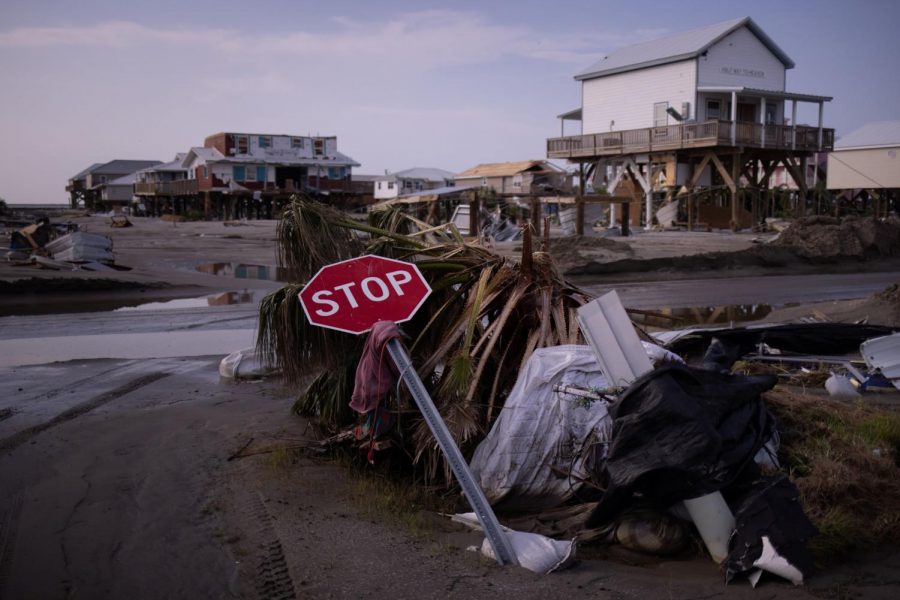New Orleans recovers after devastating Hurricane Ida
November 5, 2021
Hurricane Ida, a deadly category four hurricane, hit Louisiana and the southeast coast on Aug. 29, the 16th anniversary of Hurricane Katrina. The wind speed hit at 103 mph, tearing down trees and buildings in the city of New Orleans and throughout the coast. Now, recovery and rebuilding efforts are beginning, but people are still struggling from the destruction of the storm.
In the city of New Orleans, the storm was mostly wind. There was a lot of roof destruction, many houses were tarped up and due to COVID-19 there was a shortage of roofers, which hindered progress on rebuilding. A similar situation is happening with waste removal. Since trash has only been picked up once since Ida hit, alleyways are piling up with waste from the storm. The shortage of garbage workers is also an effect from COVID-19 and has had a large impact on cleanup efforts from the storm. However, the main issue is power, and electricians are having trouble fixing it because whole grids are destroyed, or they cannot get to the power lines because they are blocked by debris.
About 20 miles west of New Orleans, in parishes like Grand Isle, La Place and Galliano, there is a completely different situation. Houses were destroyed, and people lost all of their belongings. They are lacking basic needs such as food, shelter and running water. Most people are still having to get food from a food bank because they do not have power to keep any perishable food. Heat is also a huge problem. Temperatures still hover at 100 degrees Fahrenheit, and people with no power are struggling from heat exhaustion – especially the elderly.
The Federal Emergency Management Agency has provided many generators to those who still do not have power. However, improper use of the generators has led to many carbon monoxide poisonings and even some deaths.
“I was in New York when the storm hit so I began covering it there,” Karen Swensen, a reporter who covered the storm for News 4 New Orleans, said. “I tried to fly back to cover it from New Orleans but all my flights kept on getting delayed. I ended up flying to Houston and drove six hours in a rental car.”
Swensen was also the only woman to cover Hurricane Katrina from start to finish. She emphasized her gratitude that New Orleans survived after the storm and said everything was “bananas.”
“This storm didn’t scare me as much because it was headed to the west,” Bill Reiger, a New Orleans local, said.
Rieger remained in his house in New Orleans and didn’t evacuate until his power went out. He then went and stayed with his daughter who had a generator. He stayed there for a week and then evacuated to Orange Beach, about three hours away from New Orleans, until his power was back on. Rieger had minor water damage to his house and some shingles fell off.
“I am so grateful we didn’t have anything else,” Rieger said.
Overall, New Orleans and the surrounding parishes are getting the help they need.
“I just wish national news brought more attention to the recovery after Ida,” Swensen said.



